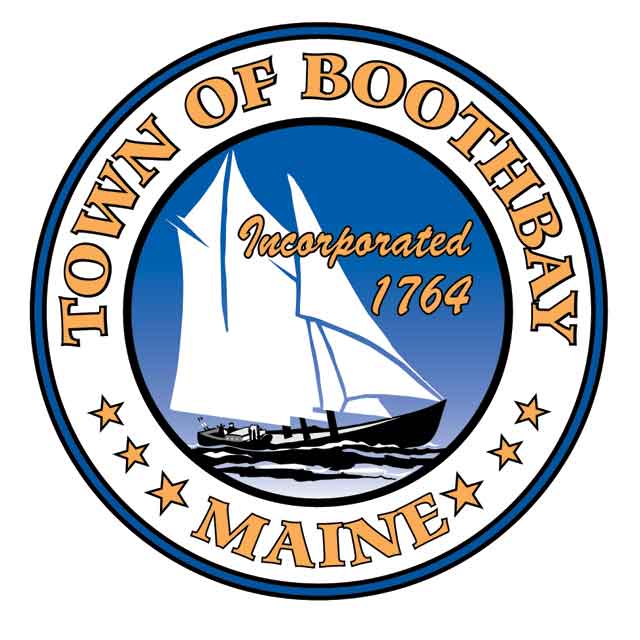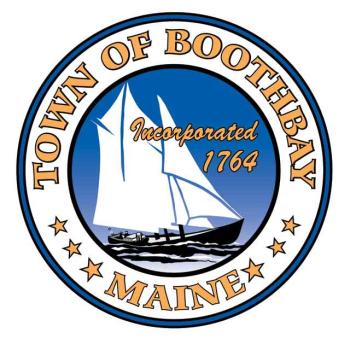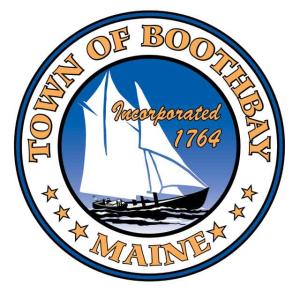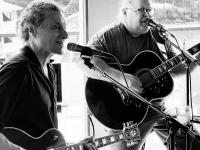Public shares views on Aqua Ventus proposal during online hearing
A Midcoast lawyer shared his local community’s experience in Port Clyde regarding the proposed New England Aqua Ventus wind power experimental project during a Zoom public hearing hosted by the Boothbay select board Feb. 24.
“I’m a lawyer in Port Clyde, and I’m telling you when it comes time to make a decision tell your select board not to approve this. Fight this like we did,” he said.
But Board Chairman Steve Lewis disagreed with the lawyer’s premise. Lewis reported the town had no say in the proposal, which is an experimental effort testing whether the state of Maine can construct a feasible turbine in the Gulf of Maine providing electricity to the grid. The University of Maine, along with Diamond Offshore Wind and German utility RWE Renewables, are developing the proposed 20-year project.
“The board has no say in this. We’re only here to host a public hearing allowing the project to provide information. There will be no decision regarding this project by the selectmen,” he said.
The proposal began in 2012 with three possible locations for running cables from a turbine located three miles off Monhegan Island to shore. Chief Executive Officer Chris Wissemann of Diamond Offshore Wind explained the project to an audience comprised of local residents and Midcoast fishermen. The turbine will generate between 9.5 to 12 megawatts. A cable would run from the turbine to East Boothbay due to its proximity to the power grid. The experiment entails seeing if the University of Maine designed turbine constructed of concrete was viable. “Our first experiment is seeing if concrete will float,” he said. “Most turbines are made out of steel, and by using concrete, it allows for construction in Maine allowing us to pursue a goal making this a home-grown project.”
The project is still seeking formal permits and Wissemann expects approval by the end of March, construction beginning this summer and turbine towed into the Gulf of Maine in 2023. The public hearing was dominated by fishermen concerned how the proposal would impact their livelihood. Questions centered around the impact of electromagnet fields generated inside cables running from the turbine, cable reliability and possible incompatibility of fishing and wind power industries.
Wissemann indicated the cables, transmitting electromagnetic waves, were encased in steel wrapping and 90% would be buried. “This has been widely used in Europe without any disruption to fishing,” he said. “NOAA (National Oceanic and Atmospheric Administration) will have a detailed map showing cable location and open areas for fishing.”
Another fishermen didn’t believe the project’s proclamation this would be good for job creation. “This will have a minimal increase locally, but create a huge job loss for us, because fishing and wind power are incompatible,” he said.
Wissemann agreed the project’s impact on the Boothbay region would be minimal. He reported two workers would check on the project daily and challenged his assertion that local fishermen’s jobs were threatened. Another resident requested more information about the turbine’s height. Wissemann reported the height hadn’t been finalized yet, but it would likely stand around 700 feet. He also agreed with the questioners’ observation that large man-made structures near the shoreline would be obtrusive. “I agree with you. Turbines should be far off-shore and the governor has taken steps to limit the number to one, Wissemann said.
Other participants questioned about disturbing the Damariscotta River and potential impact on marine-based industries. Wissemann reported testing turned up no toxins. He also said other locations viewed as potentially high-risk for toxins aren’t being considered for the project. Another fishermen questioned reliability of other projects with faulty cables. “I’m not sure what projects you’re taking about, but if a cable repeatedly breaks, like 50 times a year, then you wouldn’t have a wind power industry,” he said.
Event Date
Address
United States


























